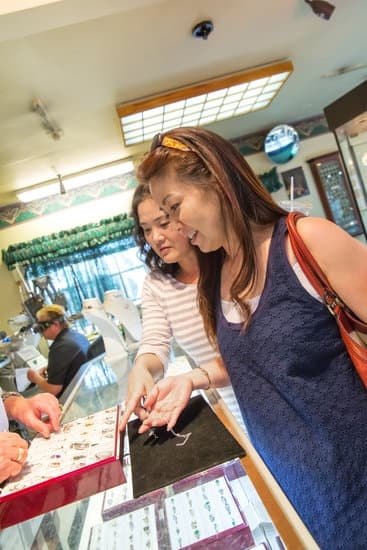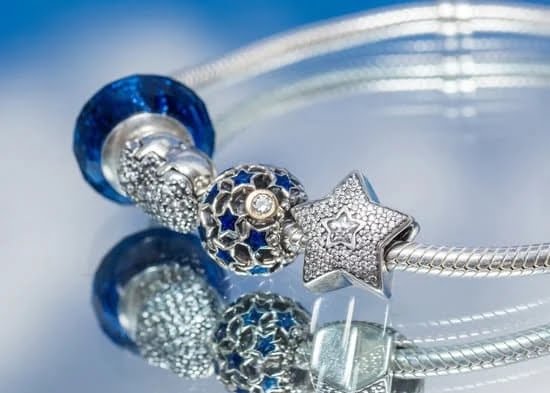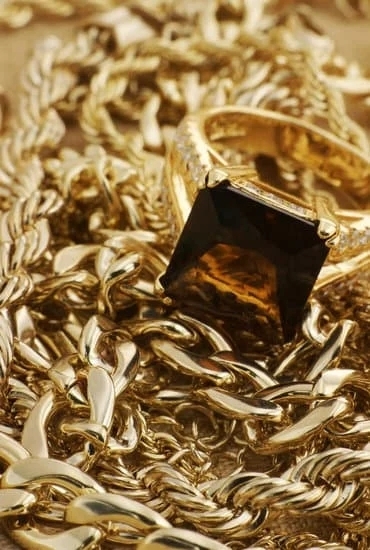Native American turquoise jewelry holds a rich history that spans thousands of years, rooted in the cultural traditions and beliefs of Native American tribes. The enchanting allure of turquoise has captivated people for generations, with its vibrant colors and spiritual significance. In this article, we will delve into the intriguing history and cultural significance of Native American turquoise jewelry, exploring the reasons behind its timeless appeal in art and adornment.
From ancient origins to contemporary trends, this comprehensive exploration of Native American turquoise jewelry will take you on a journey through time. We will uncover the earliest use of turquoise in Native American jewelry, dating back to ancient civilizations. Discover how Native American tribes first discovered and utilized turquoise in their exquisite creations.
Furthermore, we will explore the deep spiritual meaning behind turquoise for different Native American tribes. Each tribe has unique beliefs and practices surrounding this precious stone, symbolizing important aspects such as protection, healing, and connection to nature.
The wide range of hues found in Native American turquoise jewelry is also an area worth discussing. Understanding the significance of color variations is key to appreciating the diversity within these pieces. We will examine how artisans achieve various shades through natural processes or enhancement techniques.
Whether you’re a passionate collector or simply fascinated by the beauty and history of Native American turquoise jewelry, this article is designed to provide valuable insights. We’ll offer tips on recognizing authentic pieces and guide you through caring for and preserving your treasures. Additionally, we’ll shed light on notable designers who have made significant contributions to this art form while exploring modern adaptations that honor tradition while embracing innovation.
Join us as we embark on a voyage through time to uncover the enduring appeal of Native American turquoise jewelry – an art form cherished by many cultures across the globe.
Ancient Origins
The use of turquoise in Native American jewelry dates back thousands of years, with a rich history and cultural significance. This section will delve into the ancient origins of Native American turquoise jewelry, shedding light on how this precious gemstone was first discovered and utilized by Native American tribes.
Discovering Turquoise: Early Connections
Native American tribes were among the first to recognize the beauty and rarity of turquoise. The stone was believed to have mysterious powers and played a prominent role in tribal ceremonies, rituals, and adornment. From the Anasazi people in the Southwest to the Puebloans in the Rio Grande region, turquoise quickly became a treasured part of their cultural heritage.
Archaeological excavations have unearthed intricate turquoise jewelry pieces that highlight the exceptional craftsmanship of these early indigenous communities. These artifacts include elaborate necklaces, earrings, bracelets, and rings adorned with turquoise gemstones meticulously set in silver or gold.
The Spiritual Significance of Turquoise
For many Native American tribes, turquoise held deep spiritual meaning. It was believed to be a sacred stone that provided protection against negative energies and promoted harmony within oneself and with nature. According to Navajo tradition, wearing turquoise could prevent injury or accidents while hunting or engaging in battle.
Moreover, turquoise was associated with water, an element considered vital for life and prosperity in arid regions. The blue-green hues represented rainwater replenishing the earth’s resources and symbolized fertility, balance, and well-being.
Rituals and Symbolism
Turquoise also played a significant role in various Native American ceremonies and rituals. The Zuni tribe used it as an offering to honor ancestral spirits during ceremonial dances known as “Powwows.” In Navajo traditions, turquoise was incorporated into sand paintings used for healing purposes.
Different tribes had their own interpretations of the symbolic power of turquoise. For example, among the Pueblo tribes, turquoise was associated with protection and acted as a spiritual beacon, guiding individuals along their life paths. The Hopi tribe believed that wearing turquoise jewelry helped communicate with the spirits and deities, bridging the gap between the physical and spiritual realms.
The ancient origins of Native American turquoise jewelry demonstrate its deep-rooted significance within indigenous cultures. From its discovery to its incorporation into rituals and ceremonies, turquoise holds a remarkable place in Native American traditions, representing spirituality, protection, and connection to the natural world.
Turquoise as a Spiritual Symbol
Turquoise holds deep spiritual significance for Native American tribes, representing a connection to the earth and the spirit world. For many tribes, turquoise is considered a sacred stone that brings protection, healing, and good fortune. The belief in the spiritual power of turquoise dates back centuries and is embedded in various Native American cultures.
In Navajo culture, turquoise is believed to bring harmony and balance to individuals by aligning their physical and spiritual selves. It is often used in ceremonies and rituals such as blessings, weddings, and healings. Turquoise beads are sometimes included in prayer necklaces or worn as pendants by Navajo medicine men and women to enhance their abilities to communicate with spirits.
The Zuni people have long associated turquoise with fertility and used it in intricate fetish carvings of animals. These carvings are imbued with the belief that they will bring protection, abundance, and guidance from animal spirits. Additionally, the Hopi tribe believes that turquoise possesses powerful life-giving properties, symbolizing water and rain – vital elements for sustaining life in their arid desert environment.
To understand the spiritual symbolism of turquoise among Native American tribes fully, it is essential to recognize the diversity of beliefs within different communities. While some tribes view turquoise as a protective amulet or talisman against evil spirits, others see it as a stone of wisdom or communication with ancestors. The rich tapestry of beliefs surrounding turquoise reflects both its cultural importance and its timeless allure in Native American artistry.
Key Beliefs About Turquoise Among Native American Tribes
| Tribes | Beliefs |
|---|---|
| Navajo | Turquoise brings harmony and balance; it is used in ceremonies and rituals. |
| Zuni | Turquoise represents fertility and is used in fetish carvings for protection and guidance from animal spirits. |
| Hopi | Turquoise symbolizes water and rain, essential for life in the desert; believed to possess life-giving properties. |
Turquoise plays a central role in Native American spirituality, not only as a stone with protective and healing properties but also as a means of connection to ancestral wisdom. Since ancient times, Native Americans have incorporated turquoise into their ceremonies, dances, and traditional attire as a way to honor their cultural heritage. Today, the spiritual symbolism of turquoise continues to be cherished by Native American communities and is reflected in their contemporary jewelry designs.
The profound respect for turquoise as a spiritual symbol has led many Native American artisans to approach its use with reverence and meticulous craftsmanship. They recognize that each piece of turquoise carries its own spirit and energy, enhancing the significance of their jewelry creations. By understanding the spiritual beliefs and practices associated with turquoise in Native American cultures, individuals can gain a deeper appreciation for the stunning beauty and cultural importance of this precious stone.
A Kaleidoscope of Colors
Turquoise is known for its mesmerizing range of colors, and Native American jewelry showcases this diversity in stunning ways. The varied shades of turquoise found in Native American jewelry are a testament to the natural beauty and unique characteristics of this gemstone. From vibrant blues to calming greens, each hue holds its own significance and adds depth to the artistry of Native American turquoise jewelry.
The colors of turquoise in Native American jewelry are influenced by various factors, including the specific minerals present in the stone, the location of the mines, and even cultural traditions. Different tribes may prefer certain shades or intensities of turquoise based on their beliefs and aesthetic preferences.
One example is the Pueblo tribes, who have a deep reverence for blue-green turquoise. For them, this color represents water, which is essential for their agricultural practices in arid regions. The Navajo people, on the other hand, often favor green hues of turquoise that evoke images of lush landscapes and fertile lands.
Native American artisans have developed techniques to enhance or alter the color of turquoise while still honoring its natural beauty. These techniques involve treating the stones with oils or dyes to bring out certain tones or intensify existing ones. However, it’s important for buyers to be aware that enhanced turquoise should be disclosed as such for transparency.
| Turquoise Shade | Meaning/Association |
|---|---|
| Sky Blue | Protection and Communication |
| Turquoise Green | Healing and Growth |
| Robins Egg Blue | Purity and Innocence |
| Teal | Balance and Harmony |
The varicolored palette of Native American turquoise jewelry allows individuals to not only choose pieces that speak to their personal taste but also find jewelry with significant symbolic meaning. Whether it’s a vibrant blue piece representing protection or a tranquil green one promoting healing, the rich hues of turquoise in Native American jewelry add depth and allure to every design.
Recognizing Authentic Native American Turquoise Jewelry
Native American turquoise jewelry holds great cultural and artistic significance, and its popularity has led to a proliferation of imitation and faux pieces in the market. To ensure that you are purchasing authentic Native American turquoise jewelry, it is crucial to have the knowledge and skills to distinguish between genuine pieces and counterfeit ones. This buyer’s guide will provide you with valuable tips and guidelines to help you identify authentic Native American turquoise jewelry.
Craftsmanship is one of the key indicators of authenticity when it comes to Native American turquoise jewelry. Skilled artisans meticulously handcraft each piece, ensuring attention to detail, precision, and quality. Look for signs of expert craftsmanship, such as neat silverwork or intricate beadwork alongside the turquoise stone.
Hallmarks are another important aspect to consider when assessing the authenticity of Native American turquoise jewelry. Many Native American tribes have their own unique stamp or hallmark that signifies their tribal affiliation. These hallmarks can be found on the inside of rings or bracelets, on the back of pendants, or even on clasps. Researching different tribal hallmarks will give you a better understanding of which tribes produce authentic turquoise jewelry.
Sourcing is also a vital factor in determining authenticity. Genuine Native American turquoise jewelry is made using stones mined from specific regions known for their high-quality turquoise deposits. For example, some renowned sources include the Sleeping Beauty mine in Arizona or the Kingman mine in Nevada. Reputable artists often mention these sourcing details or provide certificates of authenticity that specify where the stones were sourced from.
| Indicator | Description |
|---|---|
| Craftsmanship | Look for evidence of skilled craftsmanship through neat silverwork or intricate beadwork. |
| Hallmarks | Familiarize yourself with tribal hallmarks that indicate the authenticity of Native American turquoise jewelry. |
| Sourcing | Verify that the stones used in the jewelry were sourced from reputable mines known for their high-quality turquoise. |
The Influence of Turquoise Jewelry on Native American Culture
Turquoise jewelry has had a profound impact on Native American culture throughout history. It has played a key role in traditions, ceremonies, and self-expression among Native American tribes. The popularity of turquoise jewelry has evolved over time, and it continues to influence contemporary Native American art.
For many Native American tribes, turquoise holds deep spiritual significance. It is believed to possess healing properties and serve as a protective amulet. Turquoise is often worn or carried during rituals and ceremonies to bring luck, ward off evil spirits, and promote harmony. Different tribes have their own unique beliefs and practices surrounding turquoise. For example, the Navajo people associate turquoise with the sky and see it as a symbol of life-giving rain.
Native American turquoise jewelry has also become an important form of cultural expression. Over the centuries, artisans have developed distinctive styles and techniques that are passed down through generations. The craftsmanship involved in creating these exquisite pieces reflects the rich cultural heritage of Native American tribes. The popularity of turquoise jewelry among non-Native communities has also helped preserve traditional techniques and ensure the survival of these ancient art forms.
Contemporary Native American artists are finding innovative ways to incorporate turquoise into their work while honoring traditional designs. They blend modern aesthetics with traditional craftsmanship, creating unique jewelry pieces that appeal to a wide range of collectors and enthusiasts. This fusion of tradition and innovation keeps the legacy alive while allowing for creative exploration.
Overall, turquoise jewelry has been a powerful force in shaping Native American culture. It continues to be cherished not only for its beauty but also for its cultural significance and connection to ancestral traditions. By wearing or supporting Native American turquoise jewelry today, we contribute to preserving this vibrant art form for future generations.
References:
- “Turquoise Jewelry: A Cultural Legacy” by Jennifer Oetting.
- “Understanding Northwest Coast Art: A Guide to Crests, Beings, And Symbols” by Cheryl Shearar.
- “Native American Art” by Nancy N. Schiffer.
Notable Native American Jewelry Designers
Native American turquoise jewelry has a rich history that spans centuries, and many talented designers have made significant contributions to the craft. These legendary Native American jewelry designers have not only preserved the traditions of turquoise jewelry making but also revitalized and innovated the art form. Their unique styles and techniques have cemented their status as legends of turquoise.
One notable Native American jewelry designer is Charles Loloma (1921-1991), a Hopi artist renowned for his groundbreaking designs. Loloma was known for blending traditional Native American aesthetics with contemporary forms and materials. His innovative use of gold, silver, and precious gems alongside turquoise revolutionized Native American jewelry design. He often used irregularly shaped stones or unconventional settings to create bold and imaginative pieces that pushed the boundaries of tradition.
Another legendary name in Native American turquoise jewelry is Tommy Singer (1940-2014), a Navajo silversmith famous for his distinctive style. Singer’s work was characterized by intricate stamping, complex overlay techniques, and mosaic inlay patterns using different types of turquoise. His attention to detail and mastery of traditional Navajo silverwork resulted in highly sought-after pieces that showcased his exceptional skill as an artisan.
One cannot discuss notable Native American jewelry designers without mentioning Jesse Monongya, a Zuni jeweler celebrated for his exquisite stone cutting and inlay work. Monongya’s unique aesthetic combined elements from both Zuni and Hopi traditions, resulting in distinctly beautiful creations. His meticulous craftsmanship, particularly in creating intricate geometric designs with various shades of turquoise, earned him acclaim within the Native American art world.
These legendary designers are just a few examples of the talent that has emerged from Native American communities throughout history. Their contributions have not only elevated the artistry of turquoise jewelry but have also influenced contemporary Native American artisans who continue to carry on their legacy today.
As appreciation for Native American turquoise jewelry continues to grow, it is important to recognize these designers’ cultural contributions and the enduring impact they have had on the art form. Their work serves as a reminder of the rich history and tradition behind Native American turquoise jewelry, ensuring that their legacy lives on for generations to come.
Notable Native American Jewelry Designers
- Charles Loloma (Hopi)
- Tommy Singer (Navajo)
- Jesse Monongya (Zuni)
Contemporary Trends
In recent years, there has been a growing movement within the Native American jewelry community to embrace contemporary designs and techniques while still honoring traditional craftsmanship and materials. This blending of old and new has led to a vibrant evolution in Native American turquoise jewelry, creating exciting and innovative pieces that appeal to a wider audience.
Revitalizing Traditional Techniques
One aspect of contemporary trends in Native American turquoise jewelry is the revitalization of traditional techniques. Artisans are delving into historical records, studying ancestral designs, and reimagining them with a modern twist. By combining traditional silversmithing methods with contemporary design principles, these artists are able to create unique pieces that pay homage to their cultural heritage while adding a fresh perspective.
For example, some artisans are experimenting with unconventional settings for turquoise stones, incorporating them into minimalist or geometric designs. Others are incorporating non-traditional materials like gemstones or textiles into their turquoise jewelry creations, allowing for greater creativity and personal expression.
Merging Cultures
Another significant trend in contemporary Native American turquoise jewelry is the fusion of different cultural influences. With increased cross-cultural interaction, many Native American artisans are exploring new materials, methods, and aesthetics. They may incorporate elements from other Indigenous cultures or draw inspiration from global jewelry trends.
This merging of cultures not only allows for novel designs but also serves as a reflection of the interconnectedness of diverse communities and the reclamation of indigenous identities through art. The incorporation of new elements creates an intriguing dialogue between tradition and innovation.
Sustainable Practices
A key aspect of contemporary Native American turquoise jewelry is an increased focus on sustainable practices. Many artisans are prioritizing ethical sourcing by using stones that have been responsibly mined and promoting fair-trade practices when working with suppliers. They may also be selecting natural materials for their silverwork or using recycled metals to minimize environmental impact.
Additionally, some artists are actively involved in promoting community development and supporting local economies through their craft. By engaging with sustainable practices, these artisans are not only preserving the legacy of Native American turquoise jewelry but also contributing to the broader movement towards socially conscious art and consumption.
Caring for and Preserving Native American Turquoise Jewelry
Cleaning and Maintenance
Proper care is essential to maintain the beauty and longevity of Native American turquoise jewelry. Here are some guidelines for cleaning and maintaining your treasured pieces:
– Avoid exposing turquoise jewelry to harsh chemicals, including household cleaners, perfumes, and lotions.
– To clean your turquoise jewelry, use a soft, lint-free cloth to gently wipe away dirt and oils. Avoid using abrasive materials that may scratch the surface.
– If your turquoise jewelry requires a deeper clean, you can use a mild soap and warm water solution. Be sure to rinse thoroughly and pat dry with a soft cloth.
– Store your turquoise jewelry separately in a cool, dry place to prevent scratches and minimize exposure to humidity.
– Take caution when wearing turquoise jewelry during activities that may cause impact or scratching. Remove your jewelry before swimming, exercising, or engaging in any physical activities.
Protection against Damage
To protect your Native American turquoise jewelry from damage, consider taking these additional precautions:
– Apply lotions, perfumes, and other personal care products before putting on your turquoise jewelry to minimize exposure to chemicals that may cause discoloration or damage.
– Avoid exposing your turquoise jewelry to excessive sunlight or heat as it can fade the color over time.
– Consider using protective pouches or wrapping each piece of jewelry individually in acid-free tissue paper before storing them together in a box or drawer.
– Regularly inspect your turquoise jewelry for loose stones or damaged settings. If any repairs are needed, consult a professional jeweler experienced in working with Native American turquoise.
Expert Preservation Tips
Preserving the value and integrity of Native American turquoise jewelry requires expert knowledge and techniques. Here are some additional preservation tips:
– Seek professional advice if you are uncertain about the authenticity or repair needs of your Native American turquoise jewelry.
– Preserve the original finish and patina of antique turquoise jewelry by avoiding the use of polishes or tarnish removers. Patina is a natural and desirable characteristic that adds to the historical value and beauty.
– Handle your turquoise jewelry with care to prevent accidental drops, impacts, or banging against hard surfaces.
– When storing multiple pieces of turquoise jewelry, place a protective barrier between each piece to prevent scratching.
– Consider having your turquoise jewelry re-strung periodically, especially if it features beads or intricate designs, to ensure the durability of the stringing material.
By following these caring and preservation tips, you can enjoy your Native American turquoise jewelry for years to come while preserving its beauty and cultural significance. Remember that proper maintenance not only protects the integrity of these cherished pieces but also honors the rich history and legacy they represent.
Conclusion
Recap of the Journey Through History
Throughout this article, we have embarked on a captivating journey through time, immersing ourselves in the rich history and legacy of Native American turquoise jewelry. We started by delving into the enduring appeal of this art form and explored the reasons behind its timeless allure. From there, we dove deep into ancient origins, uncovering how Native American tribes first discovered and utilized turquoise in their exquisite jewelry creations.
We then turned our attention to the spiritual symbol that turquoise holds for Native American tribes, understanding its deep significance in their beliefs and practices. The kaleidoscope of colors found in Native American turquoise jewelry was also examined, shedding light on the varied shades and their significance achieved through natural processes or enhancement techniques.
The Influence on Culture and Contemporary Adaptations
The influence of turquoise jewelry on Native American culture proved to be significant, impacting traditions, ceremonies, and self-expression. It became clear that turquoise had evolved beyond mere adornment; it had become a symbol of cultural identity. Additionally, notable Native American jewelry designers were highlighted for their contributions in preserving and revitalizing turquoise jewelry traditions.
In exploring contemporary trends, we discovered that Native American artisans have embraced both tradition and innovation in creating modern adaptations of turquoise jewelry. The fusion of old and new ensures that the legacy lives on while allowing for self-expression within a rapidly changing world.
A Call to Appreciate and Support
As we come to the conclusion of our journey through the history of Native American turquoise jewelry, it is important to honor its rich legacy. By appreciating the craftsmanship, symbolism, and cultural significance embedded within each piece, we can foster a deeper understanding and connection with this art form.
We invite readers to not only admire these beautiful pieces but also support the continued creation and preservation of Native American turquoise jewelry. By seeking out authentic pieces from reputable sources and supporting Indigenous artisans, we can make a tangible impact in keeping these traditions alive for generations to come.
Additional Resources
As we conclude our exploration of the rich history and enduring appeal of Native American turquoise jewelry, it is important to provide readers with additional resources that will allow them to further delve into this captivating subject. While this article has provided a comprehensive overview, there is always more to discover and learn about the beauty and cultural significance of Native American turquoise jewelry.
For those seeking in-depth knowledge and a deeper understanding, we recommend turning to books dedicated to the topic. Some notable titles include “Turquoise Jewelry of the Indians of the Southwest” by Jackson Clark, “Turquoise Unearthed: An Illustrated Guide” by Joe Dan Lowry, and “Native American Artistry in Turquoise” by Lois Sherr Dubin. These books offer detailed insights into the history, craftsmanship, symbolism, and techniques associated with Native American turquoise jewelry.
In addition to books, museums serve as invaluable resources for immersing oneself in the world of Native American turquoise jewelry. The National Museum of the American Indian in Washington D.C., The Heard Museum in Phoenix, Arizona, and The Millicent Rogers Museum in Taos, New Mexico all house noteworthy collections that showcase the beauty and significance of Native American jewelry, including turquoise pieces.
These institutions provide an opportunity to appreciate exquisite examples firsthand while gaining a deeper understanding of Native American cultures.
Finally, organizations dedicated to preserving and promoting Native American arts are invaluable resources for individuals interested in supporting artists and artisans working with turquoise. The Indian Arts & Crafts Association (IACA), Indian Pueblo Cultural Center, Navajo Arts & Crafts Enterprise (NACE), and Southwest Association for Indian Arts (SWAIA) are just a few examples of organizations that champion indigenous artists and work towards protecting their artistic heritage.
With these additional resources at hand, we hope that readers will continue their journey into Native American turquoise jewelry with newfound curiosity and appreciation. By learning more about this storied craft, supporting artists practicing traditional techniques or creating innovative designs, and engaging with the vibrant museum exhibits and literature available, we can all play a part in honoring the rich history and legacy of Native American turquoise jewelry.

Welcome to my jewelry blog! My name is Sarah and I am the owner of this blog.
I love making jewelry and sharing my creations with others.
So whether you’re someone who loves wearing jewelry yourself or simply enjoys learning about it, be sure to check out my blog for insightful posts on everything related to this exciting topic!





